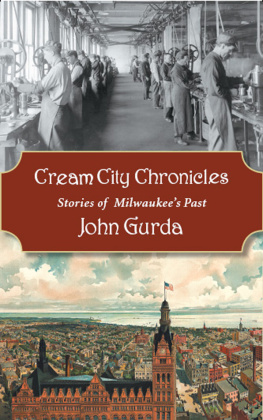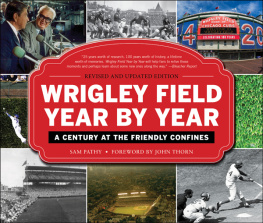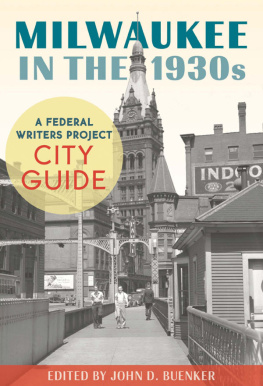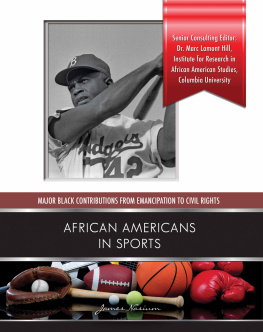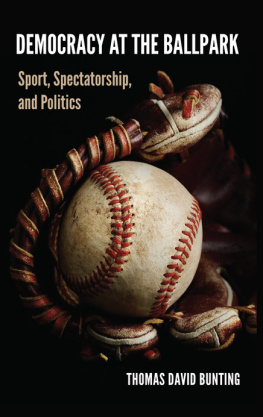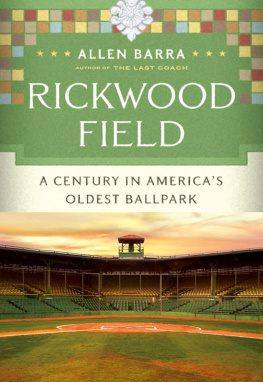Borchert Field
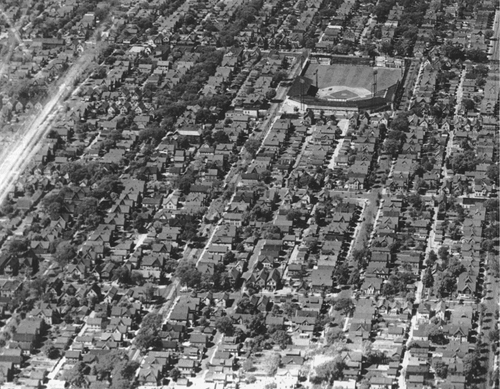
As this view makes clear, Borchert Field was very much a neighborhood ballpark. COURTESY OF EGON GROTHE
Borchert Field

Stories from Milwaukees Legendary Ballpark
Bob Buege
WISCONSIN HISTORICAL SOCIETY PRESS
Published by the Wisconsin Historical Society Press
Publishers since 1855
The Wisconsin Historical Society helps people connect to the past by collecting, preserving, and sharing stories. Founded in 1846, the Society is one of the nations finest historical institutions.
Order books by phone toll free: (888) 999-1669
Order books online: shop.wisconsinhistory.org
Join the Wisconsin Historical Society: wisconsinhistory.org/membership
2017 by Bob Buege
E-book edition 2017
For permission to reuse material from Borchert Field (ISBN 978-0-87020-788-4; e-book ISBN 978-0-87020-789-1), please access www.copyright.com or contact the Copyright Clearance Center, Inc. (CCC), 222 Rosewood Drive, Danvers, MA 01923, 978-750-8400. CCC is a not-for-profit organization that provides licenses and registration for a variety of users.
Photographs identified with WHi or WHS are from the Societys collections; address requests to reproduce these photos to the Visual Materials Archivist at the Wisconsin Historical Society, 816 State Street, Madison, WI 53706.
Front cover photos: top, Otto Borchert (the man at right in the suit and hat) knew how to fill his ballpark in the 1920slet kids in free for a day. Photograph courtesy of the Milwaukee County Historical Society. Bottom left and bottom right, Richard Lulloff Collection. Spine: Richard Lulloff Collection. Back cover: Brewers schedule courtesy of Paul F. Tenpenny
Designed by Ryan Scheife/Mayfly Design
21 20 19 18 17 1 2 3 4 5
To my dad, who lit the flame
Contents
Okay, so it wasnt Yankee Stadium. But it had a short right-field line, just like the park where Maris slammed number 61. The Yankees played here a bunch of times, too. The Bambino, the Iron Horse, Joltin Joe, the Mickthey all played in Borchert Field.
Casey Stengel managed in Borchert Field, for more than one club. He managed the Milwaukee ball club, and his team won the pennant. He was not universally popular, though, and he got fired. Just like in the Big Apple.
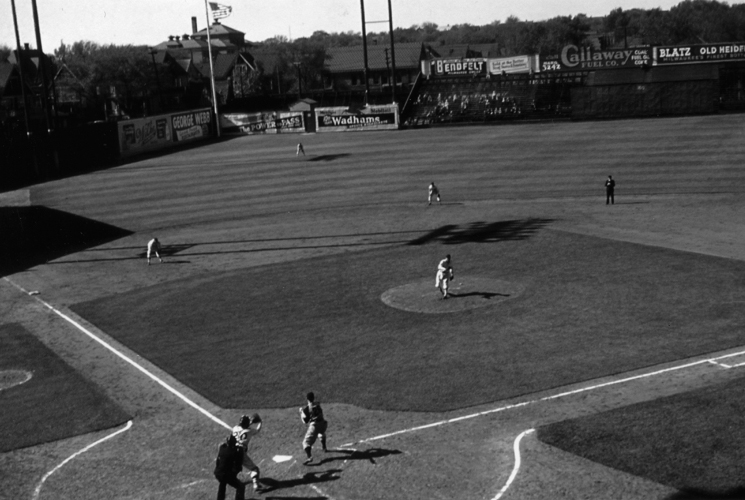
Old Glory waves in front of Borchert Fields left-center-field fence while long shadows signal the game must end soon. PHOTOGRAPH COURTESY OF THE MILWAUKEE COUNTY HISTORICAL SOCIETY
The man acclaimed as the worlds greatest athlete in the 1912 Olympic Games, Jim Thorpe, didnt get along in Gotham City, so he was farmed out to play ball in Borchert Field (called Athletic Park at the time) for a season. He and his family took up residence a fly ball away. A few years later he returned and played pro football there.
Just like in the famous ballpark in the Bronx, visiting ballplayers included the greatest heroes of the game: Teddy Ballgame, the Say-Hey Kid, Stan the Man, even native son Bucketfoot Al, known locally as the Duke of Mitchell Street. They all showed off their talents in Borchert Field.
So did Eddie Mathews and Lew Burdette, stars of the 1957 World Series. Eddie smashed a grand slam and the next day was demoted to Atlanta. And owner Bill Veeck learned how to be a promotional genius in Borchert Field. He conceived and perfected many of his stunts in the old wooden ballpark at Eighth and Chambers.
Just like the House That Ruth Built, Borchert Field hosted non-baseball events also, some in the sports field, some not. Boxing and wrestling matches were big. So were football games at every level.
The Green Bay Packers played in Borchert Field, in league games, not exhibitions. Sometimes they were the home team; other times they were the visitors. Curly Lambeaus guys held Yankee Stadiums team, the ones sportscaster Chris Berman likes to call the New York Football Giants, without a first down. Somehow, the Packers still lost. Anything was possible in Borchert Field.
Major league baseballs winningest manager, and the runner-up, appeared there. The greatest hitter who ever lived and the best ballplayer both performed at Eighth and Chambers. The first driver to intentionally roll a car over did so inside Borcherts wooden confines. The finest woman athlete the world has ever seen rode a donkey there. The ugliest man in the worldand no one disputed the claimgrappled there.
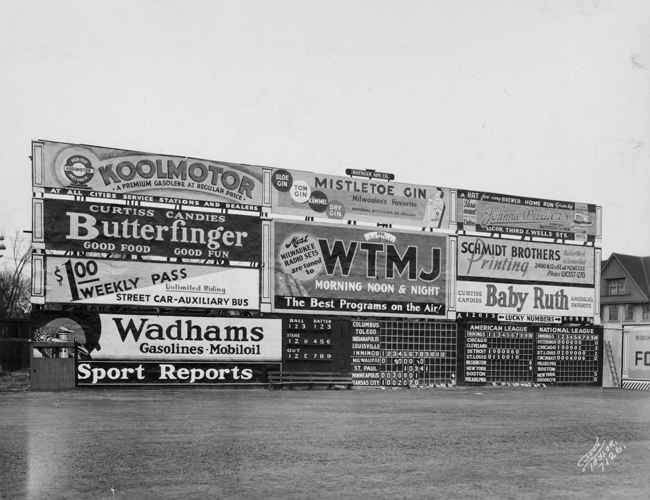
Borchert Fields manual scoreboard in right-center field kept the score, advertised the sponsors, and stood watch over a variety of activities. HISTORIC PHOTO COLLECTION / MILWAUKEE PUBLIC LIBRARY
Jackie Price caught fly balls in his jeep and took batting practice while hanging upside down. Ralph Cuttings goat kept the lawn trimmed. Cuckoo Christensen read the newspaper while playing the outfield. The man who ordered the dropping of the atomic bomb on Hiroshima gave a speech standing near the ballparks home plate. Every night for two weeks, Mount Vesuvius erupted behind second base and probably scared neighborhood dogs out of their wits.
A person lucky enough to live on Milwaukees near north side between 1888 and 1952 could experience the world without ever leaving the neighborhood.
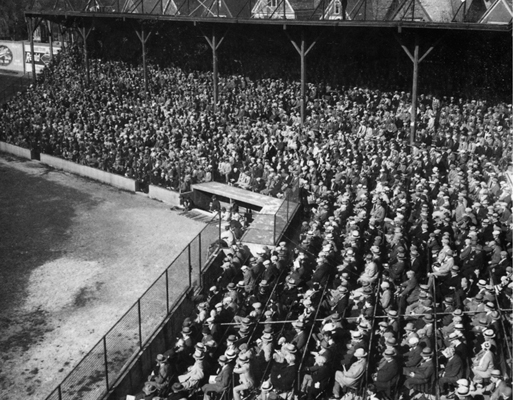
The photographer must have hung from the rafters to capture this full house and one of Borchert Fields unusual angled dugouts. PHOTOGRAPH COURTESY OF THE MILWAUKEE COUNTY HISTORICAL SOCIETY
Athletic Park, later named Borchert Field, was Milwaukees major sports venue for 64 years. It was built entirely of wood in less than three months in the same year in which Ernest Lawrence Thayers poem Casey at the Bat first caught the publics fancy. At the time, the United States had only 38 states. The cost of the project was roughly $40,000, all private money, the lions share of which went for the purchase of five acres of land on Milwaukees north side, bounded by North Seventh and Eighth Streets and West Chambers and Burleigh Streets.
Like New Yorks Polo Grounds, Athletic Park filled a rectangular city block, producing very short distances to the foul poles and a deep center field. The dugouts were angled in the middle, and the grandstands behind and alongside home plate were U-shaped. As a result, fans could not see the entire playing field. As Minneapolis Millers owner Mike Kelley so aptly explained, to see a game in Milwaukees park you needed to buy two admissions, one on the first-base side today and one on the third-base side tomorrow.
Built for Milwaukees Brewers of the Western Association, Athletic Park opened for business on May 20, 1888. An immense crowd of 6,000, the citys largest for a ballgame, packed the premises for the dedication and the Brewers 95 victory over St. Paul. The park served for nine seasons but became redundant when Milwaukee Baseball Park (also known as Lloyd Street Grounds) was constructed. In 1897 the facility was converted to a National Guard drill ground and horse stable. With the formation of the American Association in 1902, park owner Harry Quin retrofitted it for baseball. It remained so for half a century.


